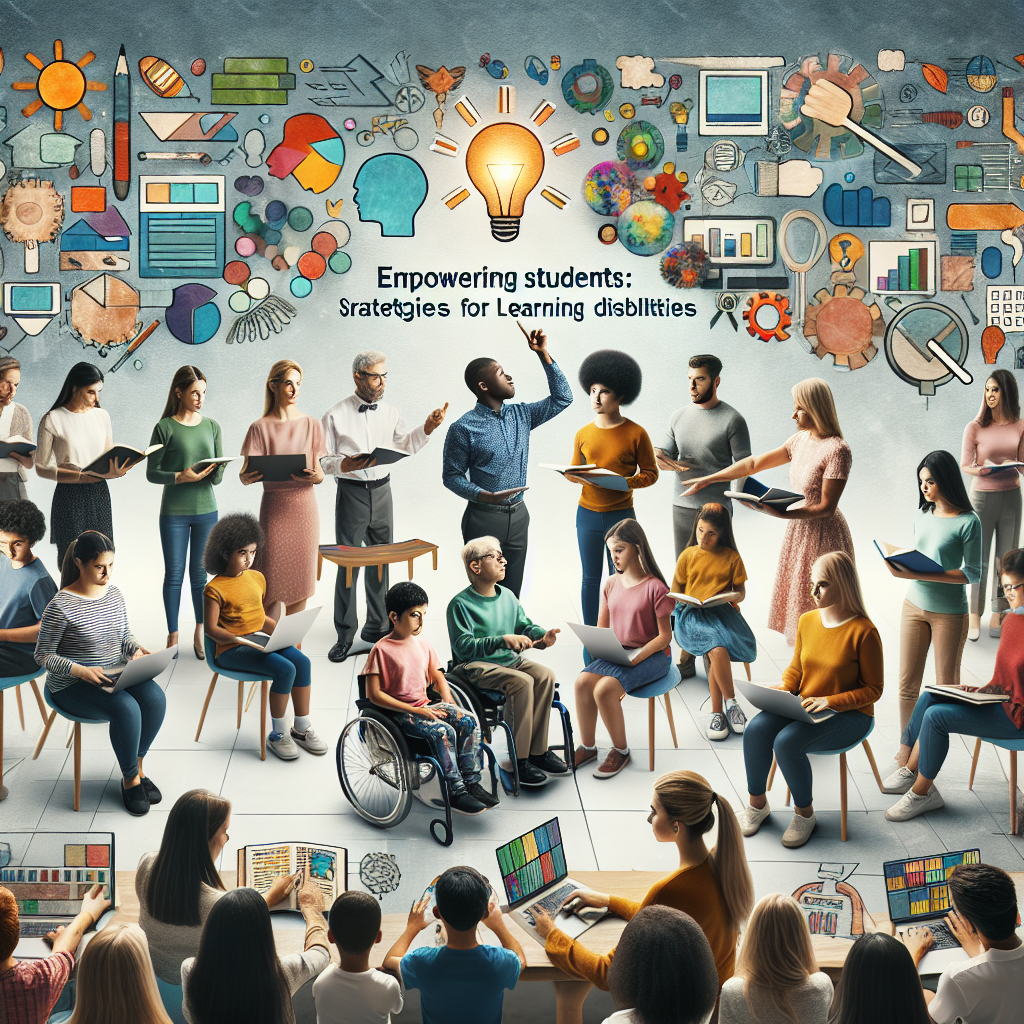
Introduction
In an increasingly diverse educational landscape, the challenge of supporting students with learning disabilities has never been more crucial. With an estimated 1 in 5 students experiencing some form of learning disability, it’s essential that educators, parents, and advocates come together to empower these students. Empowering Students: Strategies for Supporting Learning Disabilities not only addresses the academic needs of these individuals but also nurtures their emotional and social development. This article will explore effective, actionable strategies that can be utilized in the classroom and beyond, ensuring that no student is left behind.
Understanding Learning Disabilities
What Are Learning Disabilities?
Learning disabilities (LD) are neurological conditions that affect an individual’s ability to receive, process, or communicate information. They can manifest in various ways, including difficulties with reading (dyslexia), writing (dysgraphia), and mathematics (dyscalculia).
The Importance of Early Identification
Identifying learning disabilities early is vital. Early intervention can lead to better academic outcomes and improved self-esteem. Educators and parents must work collaboratively to spot the signs of learning disabilities, which might include:
- Difficulty following instructions
- Trouble with time management
- Problems with organization or maintaining focus
The sooner these signs are addressed, the more effectively students can be supported. Empowering Students: Strategies for Supporting Learning Disabilities underscores the importance of proactive measures.
Case Study: Sarah’s Journey
Sarah, a bright 10-year-old with dyslexia, struggled significantly with reading in her early years of schooling. Thanks to her teacher’s early identification and subsequent interventions—including specialized reading programs and one-on-one tutoring—Sarah gained confidence and made significant progress within a year. This case exemplifies the power of early detection and tailored strategies in empowering students.
Effective Strategies for Supporting Learning Disabilities
1. Differentiated Instruction
Differentiated instruction tailors teaching to meet the varied needs of students. For learners with disabilities, this may include:
- Adjusting the pace of lessons
- Utilizing varied teaching methods (visual aids, hands-on activities, etc.)
- Incorporating student interests into learning material
Table 1: Differentiated Instruction Techniques
| Technique | Description |
|---|---|
| Tiered Assignments | Assignments designed at varying levels of difficulty. |
| Flexible Grouping | Students work in diverse groups based on their needs. |
| Ongoing Assessment | Regular check-ins to monitor progress and adapt strategies. |
2. Technology Integration
Advancements in technology offer a plethora of resources for students with learning disabilities. Tools such as speech-to-text software, audiobooks, and educational apps can be game-changers.
Case Study: Alex and Text-to-Speech Software
Alex, a high school student with dyslexia, found traditional reading assignments daunting. By incorporating text-to-speech software, Alex could engage with reading materials more comfortably, leading to a marked improvement in his comprehension and performance.
3. Building a Supportive Environment
A nurturing classroom environment is essential for students with learning disabilities. Strategies include:
- Encouraging peer support
- Celebrating small achievements
- Fostering open communication
4. Collaborating with Specialists
Collaboration with special education teachers, psychologists, and occupational therapists can be crucial in developing and implementing effective learning strategies tailored to individual needs.
Case Study: The Collaborative Approach at Jefferson High School
At Jefferson High School, a collaborative model involving teachers, special education staff, and parents was implemented. Together, they developed individualized learning plans for students with learning disabilities, resulting in improved academic performance and social skills.
5. Social Skills Training
Social skills are critical for success, both in and out of school. Programs that focus on building these skills can help students navigate social interactions more effectively.
Creating an Inclusive Curriculum
Emphasizing Universal Design for Learning (UDL)
Implementing UDL principles ensures that all students can access, engage with, and participate in learning. Key elements include:
- Multiple means of representation (various formats for information)
- Multiple means of action and expression (different ways to demonstrate understanding)
- Multiple means of engagement (varied ways to stimulate interest and motivation)
Case Study: The UDL Framework at Maple Leaf Elementary
Maple Leaf Elementary adopted a UDL framework, providing resources in diverse formats—videos, podcasts, and hands-on projects. The result? Students reported increased engagement and understanding across the board.
Empowering Families and Caregivers
The Role of Family Support
Families play a crucial role in the academic success of students with learning disabilities. Educating families about learning disabilities and equipping them with strategies for home can foster a supportive environment.
Resources for Parents
- Workshops on learning disabilities
- Parent-support groups
- Online forums and resources for ongoing education
Conclusion
Empowering Students: Strategies for Supporting Learning Disabilities is not merely about academic success; it’s about nurturing resilient, confident learners. By implementing the strategies discussed in this article, educators, families, and communities can collaboratively create an empowering environment where all students can thrive. Remember, every child has the right to succeed—investing in the tools and resources for learning disabilities is an investment in our collective future.
FAQs
1. What are some signs that a child may have a learning disability?
Signs can include frequent frustration with schoolwork, difficulties following directions, or challenges in organizing tasks. If concerned, consult with an educational psychologist.
2. How can I support my child with a learning disability at home?
Create a structured environment, establish clear routines, and utilize resources like learning apps or tutoring services to assist them.
3. Are learning disabilities curable?
While learning disabilities are not curable, effective strategies can significantly improve learning outcomes and self-esteem.
4. What should I do if I suspect a child has a learning disability?
Seek a professional evaluation from an educational psychologist or specialist to identify needs and develop a suitable intervention plan.
5. How can schools become more inclusive for students with learning disabilities?
Training for educators on differentiated instruction, leveraging technology, and creating a culture of understanding among students can enhance inclusivity.
By embracing the principles discussed here, we can fundamentally alter the educational landscape, ensuring that empowering students becomes a guiding principle for all. The journey toward understanding and supporting learning disabilities is just beginning, but together, we can make a profound impact.

















